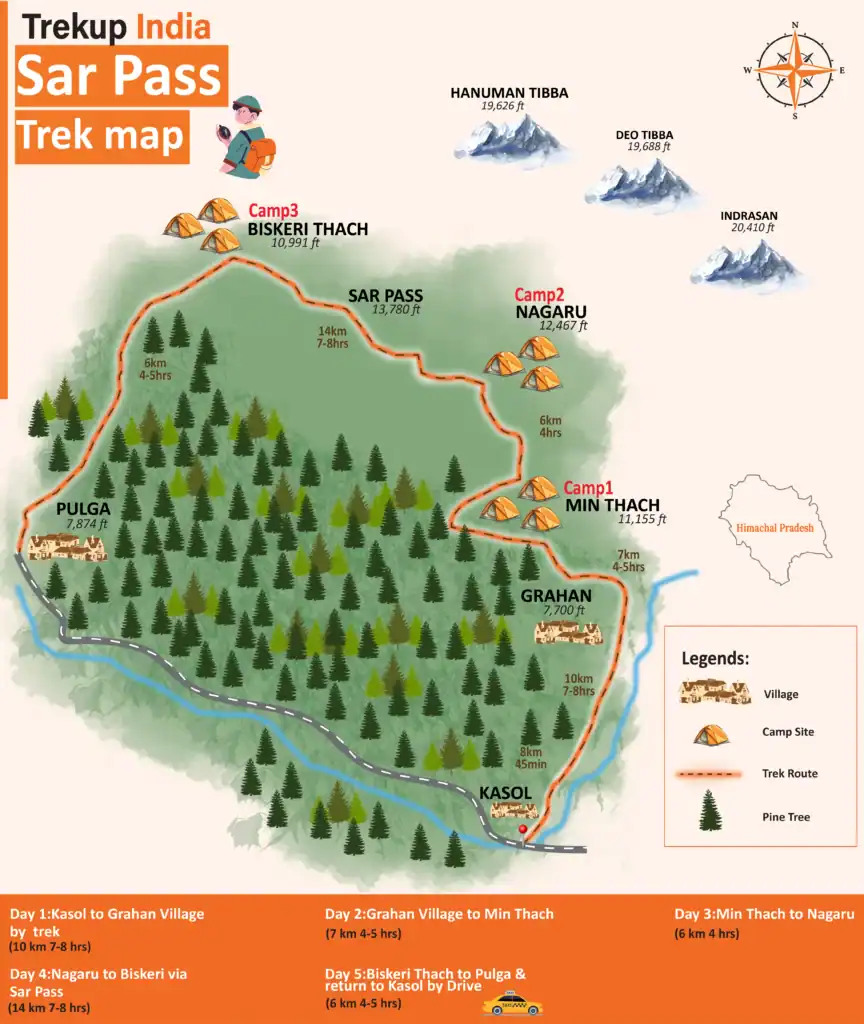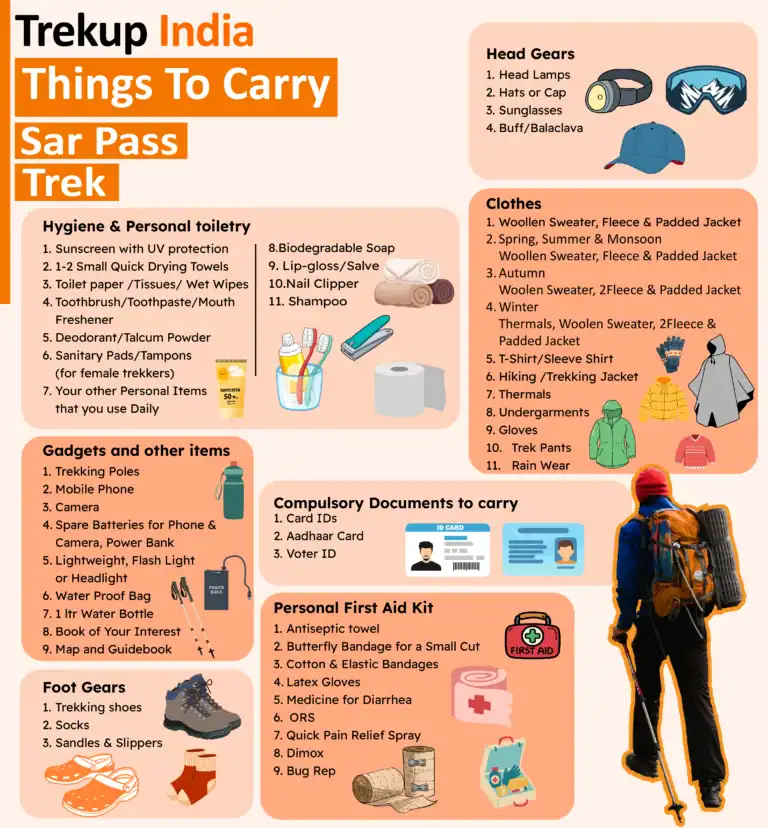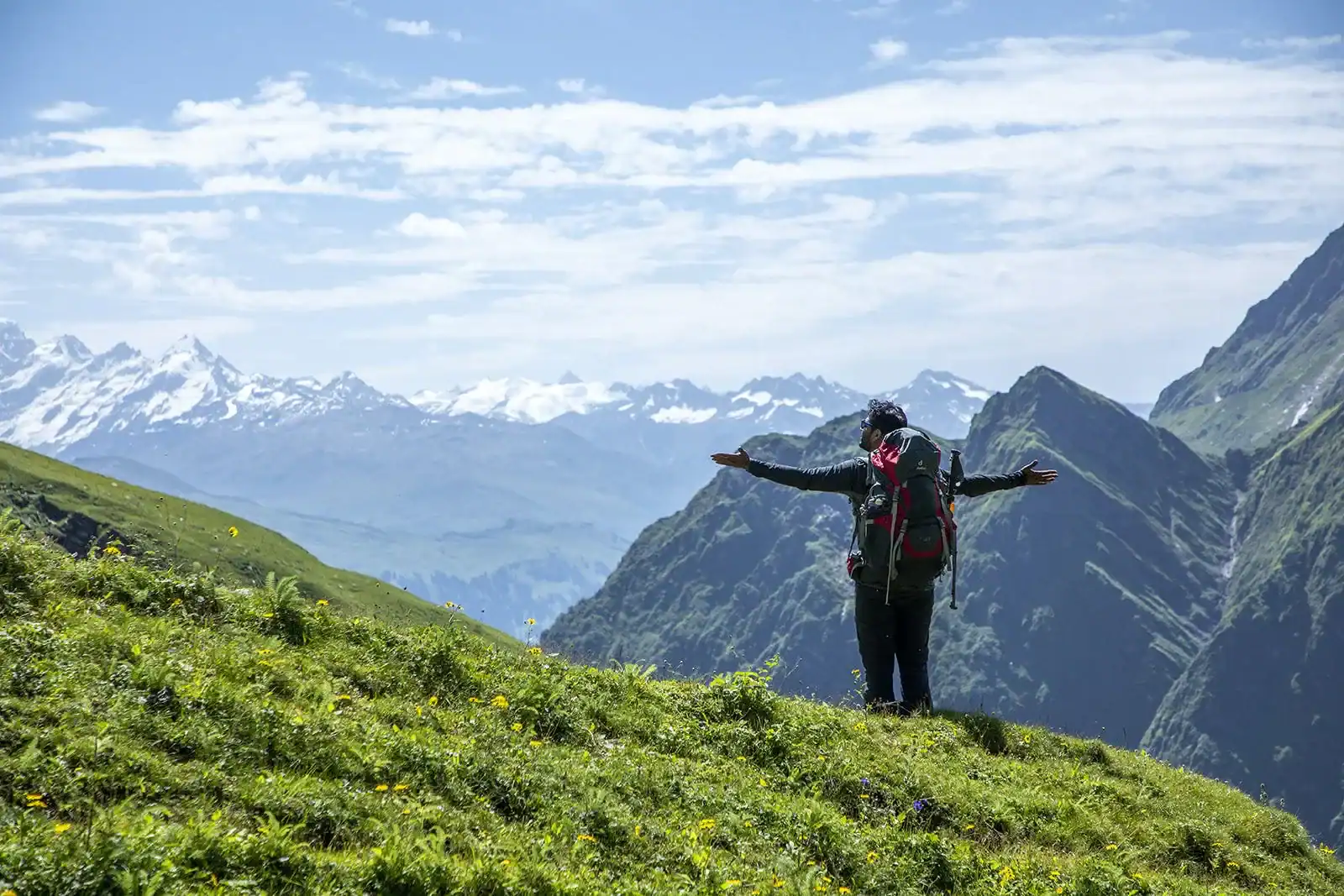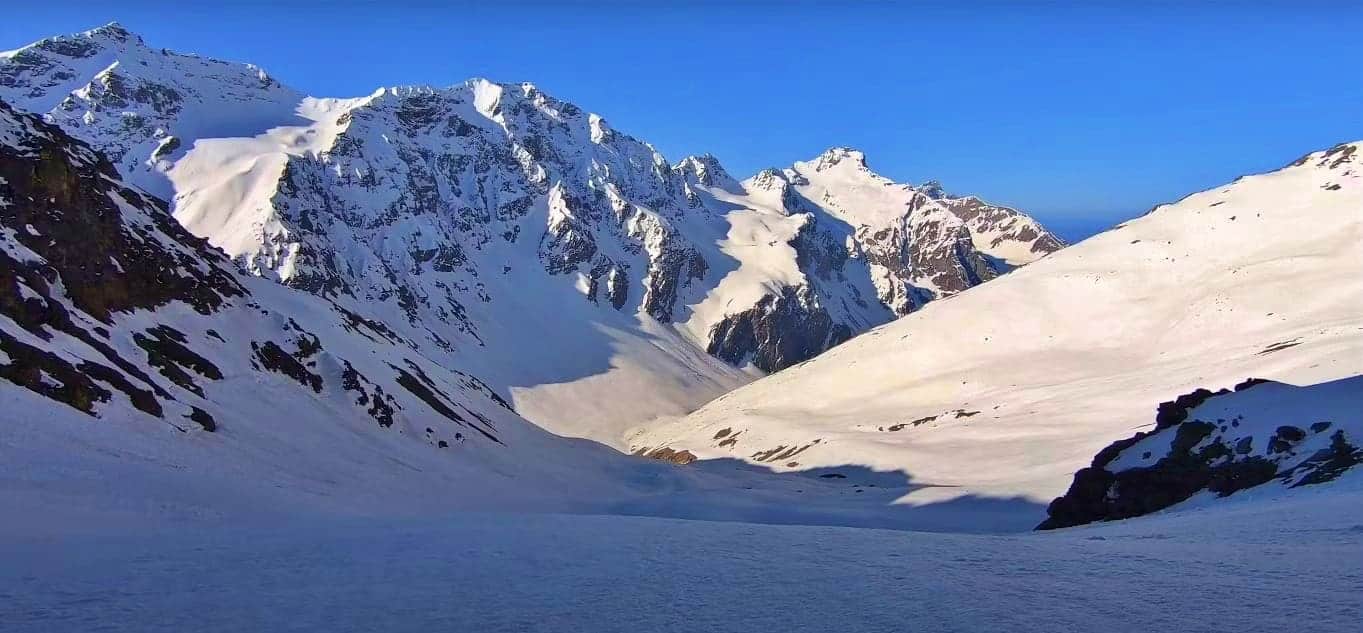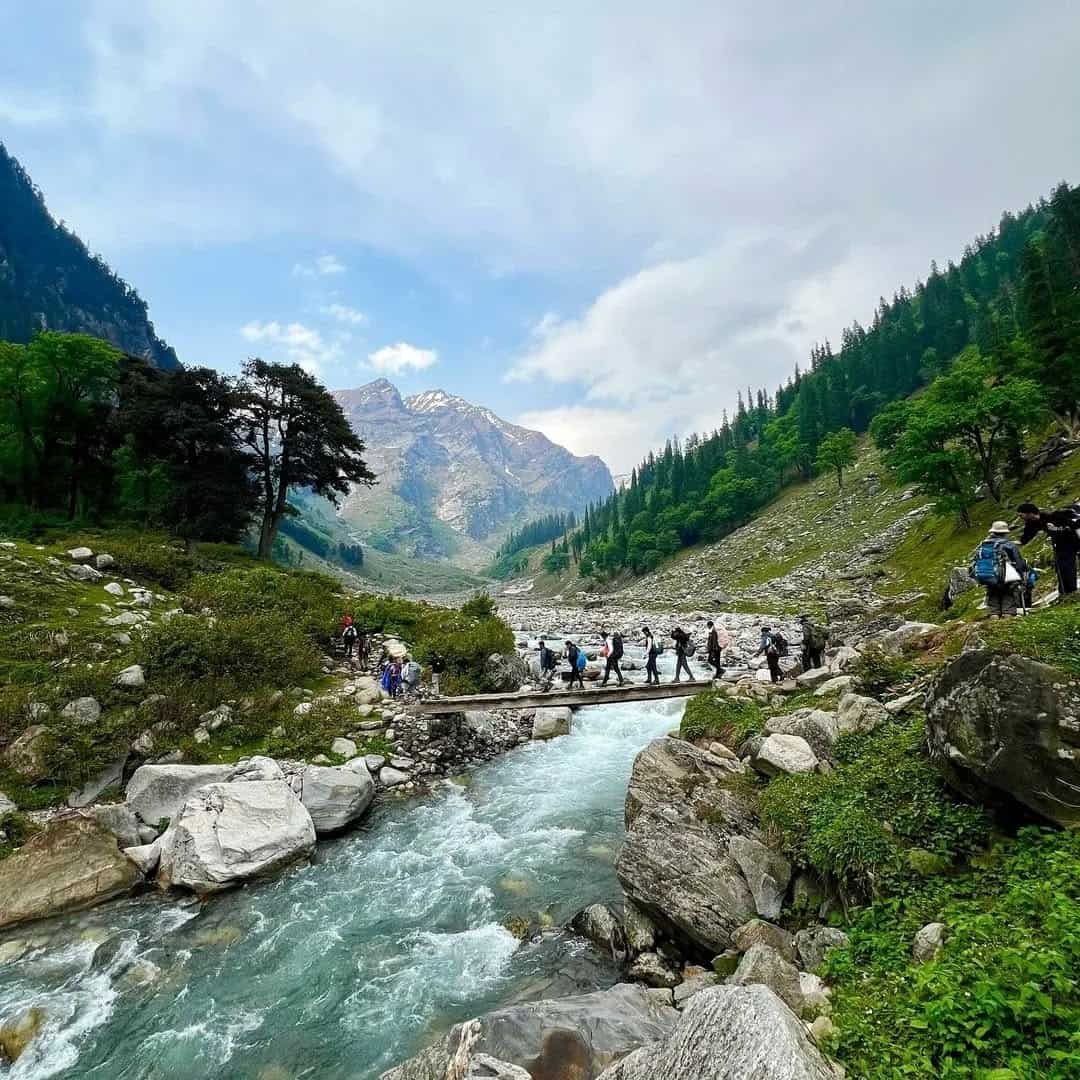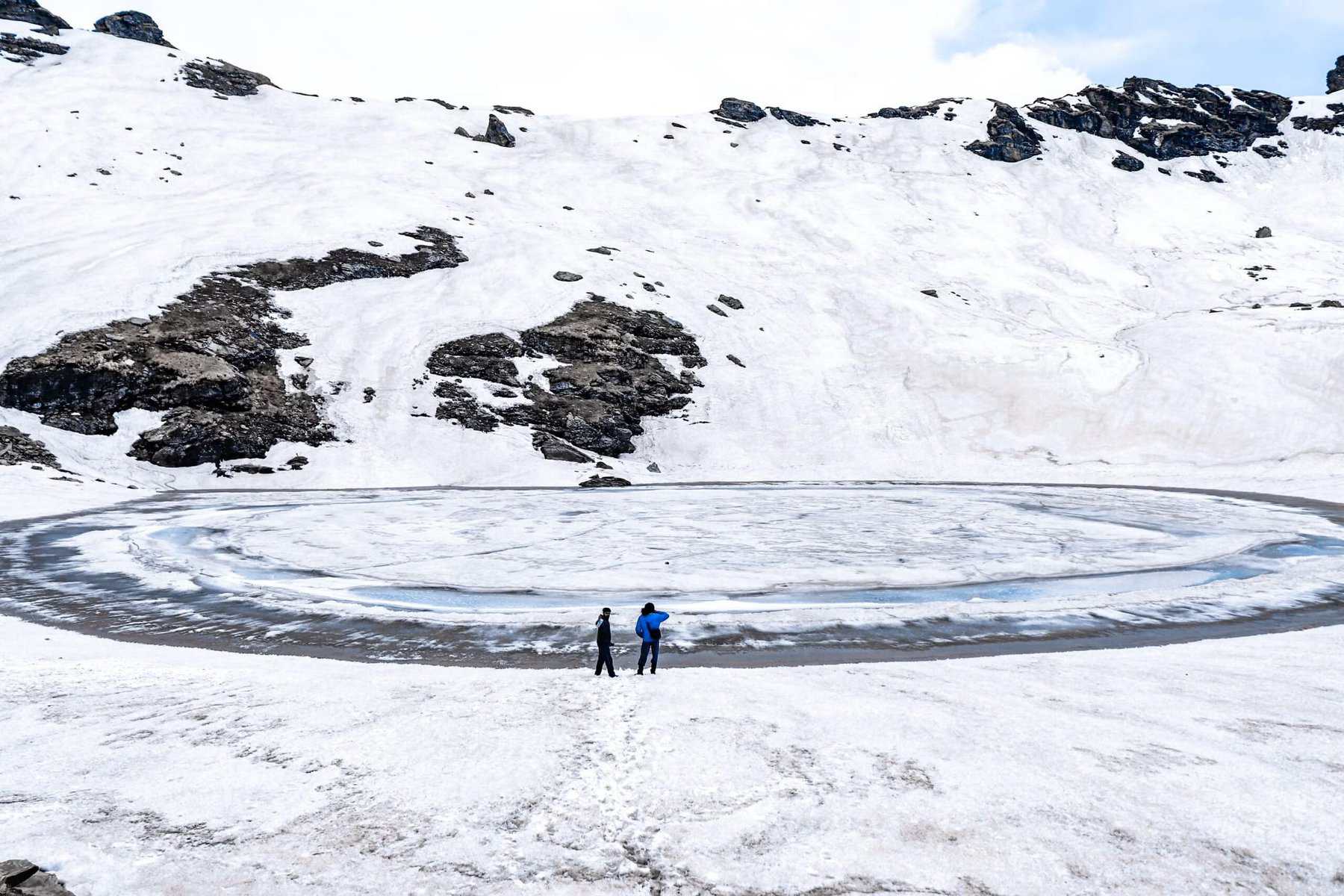30+ Years Of Trusted Trekking Expertise | Crafting Memories Since 1993
Trek Grade
Easy - Moderate
Highest Altitude
13,797 ft
Base Camp
Kasol
Best Time
April & May
Trek Distance
33 Km
Not sure which trek is right for you? Trekup India’s Mountain Experts have you covered.
Not sure which trek is right for you? Trekup India’s Mountain Experts have you covered. From figuring out if a trek matches your fitness level to knowing who you’ll be trekking with, we’re here to answer all your questions. Reach out to our Mountain Experts and plan your trek with confidence.
Sar Pass Trek
The Sar Pass Trek is a popular, easy-to-moderate trek that spans 48 kilometers. It offers a unique opportunity to explore the diverse and breathtaking landscapes nestled in the majestic Himalayas. The trek starts from the Himalayan village of Kasol, located in the Parvati Valley of Himachal Pradesh, and reaches an elevation of 13,800 feet.
The journey takes you through a variety of terrains and ecosystems, from lush green forests of deodar, pine, and rhododendrons to snow-covered peaks and vast grasslands. The temperatures vary from 22°C to -5°C, making it ideal for beginners and those seeking a moderate challenge.
As you traverse the Sar Pass trek, you’ll encounter a diverse range of flora and fauna, including towering pine, spruce, deodar, and fir trees and medicinal plants such as Brahma Kamal and Hatha Panja. Wildlife enthusiasts will also be thrilled to spot rare species like Brown Bears and Himalayan Tahr and beautiful bird species like Western Tragopan and Monal Pheasant.
The Sar Pass Trek takes you on an exciting adventure through vibrant green woodlands, charming villages like Grahan, and scenic meadows like Min Thach and Biskeri Thach. At Grahan Village, you can enjoy breathtaking views of a starry night sky that will leave you spellbound. The trek then proceeds to Nagaru, where the landscapes transform into snow-covered expanses of pure white.
On the fifth day of the Sar Pass, you’ll return to Kasol via Barshaini, completing the journey through incredible sights and experiences. The moderate gradient of the trek makes it accessible to a wide range of participants, including beginners and seasoned trekkers. The Sar Pass Trek is undoubtedly an unforgettable experience that should be on every adventurer’s bucket list.
On the last day, if you plan to visit Manikaran, the following conditions apply:
- If only some trekkers wish to visit Manikaran, the vehicle will drop them off at Manikaran. Afterwards, trekkers can arrange their own transport to Kasol, which is only 3 kilometers away. Alternatively, we can arrange a vehicle for an additional cost of Rs. 500 per vehicle.
- If all trekkers wish to visit Manikaran, waiting charges for the vehicle will be applicable at approximately Rs. 200-300 per hour.
Trek Cost
- Stay will be on a twin-sharing basis in tents
- + 210 Trek Insurance (Mandatory)
- Discount Policy
- Transport Included After Trek To Reach Kasol
Pick location – Yodo Cafe, Main Market Rd, Old Bridge, Kasol reporting time 8.30 am
Drop Location: All trek participants will be dropped off at Kasol between 4:00 and 6:00 pm.
Fix Departure Dates
Sar Pass Trek Videos
Videos by experts watch these videos to prepare well for a Successful Trek

Want To Trek Like Pro?
Basically, watch these videos if you want to trek the same way professional trekkers do and make your skills better. These videos contain useful tips and techniques to further improve your trekking skills itself. These videos actually help both new and experienced trekkers improve their trekking skills. These videos definitely provide useful tips that make your trek better. We are seeing that these videos by Trekup India experts will only help you make your trekking skills better.
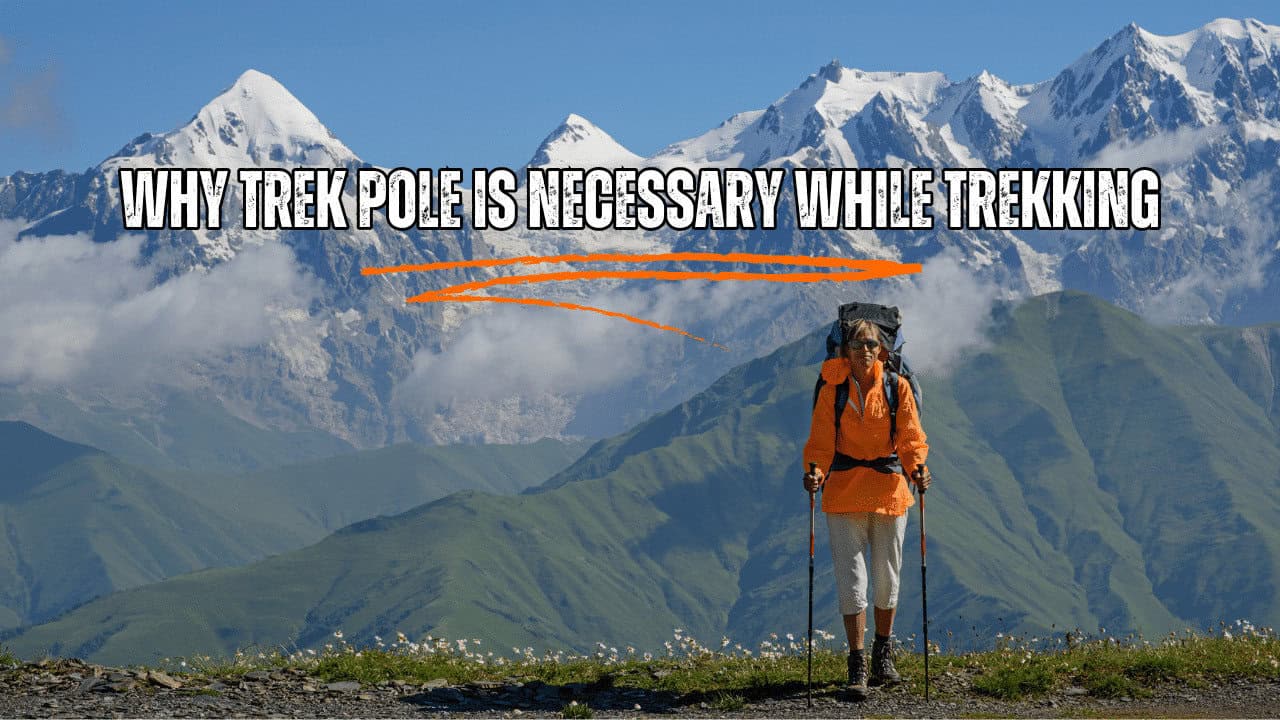
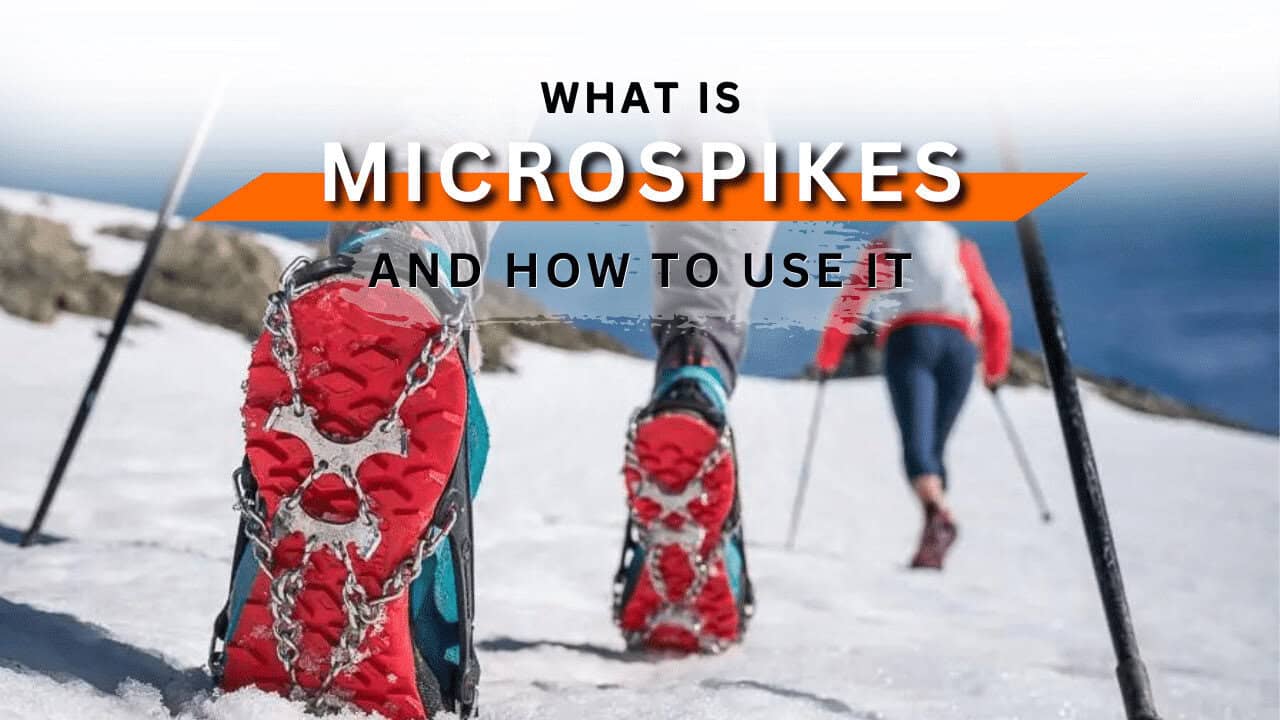
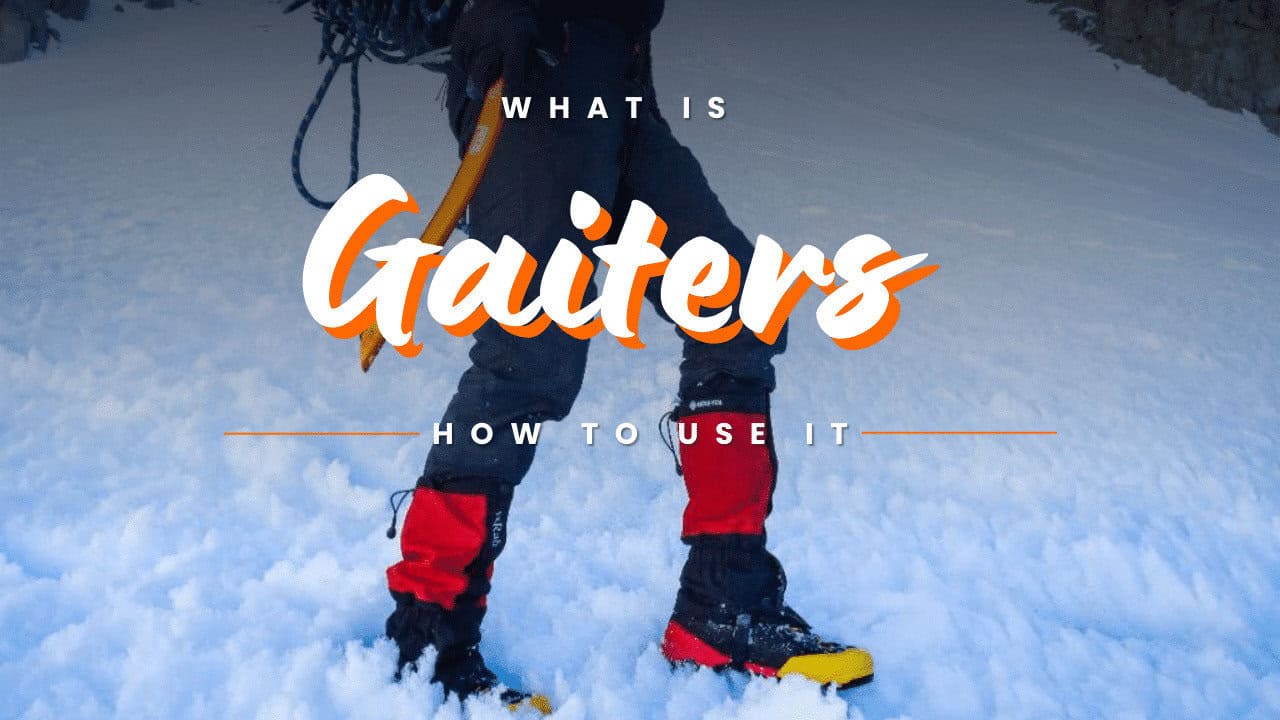
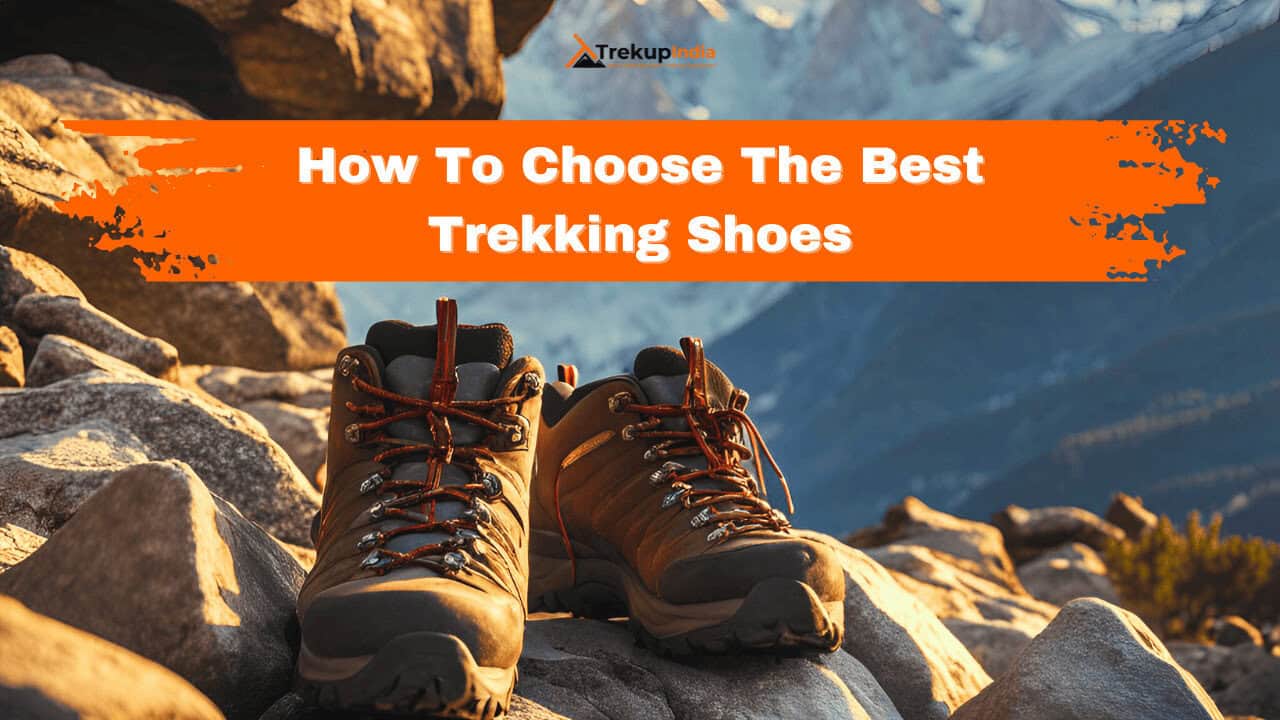
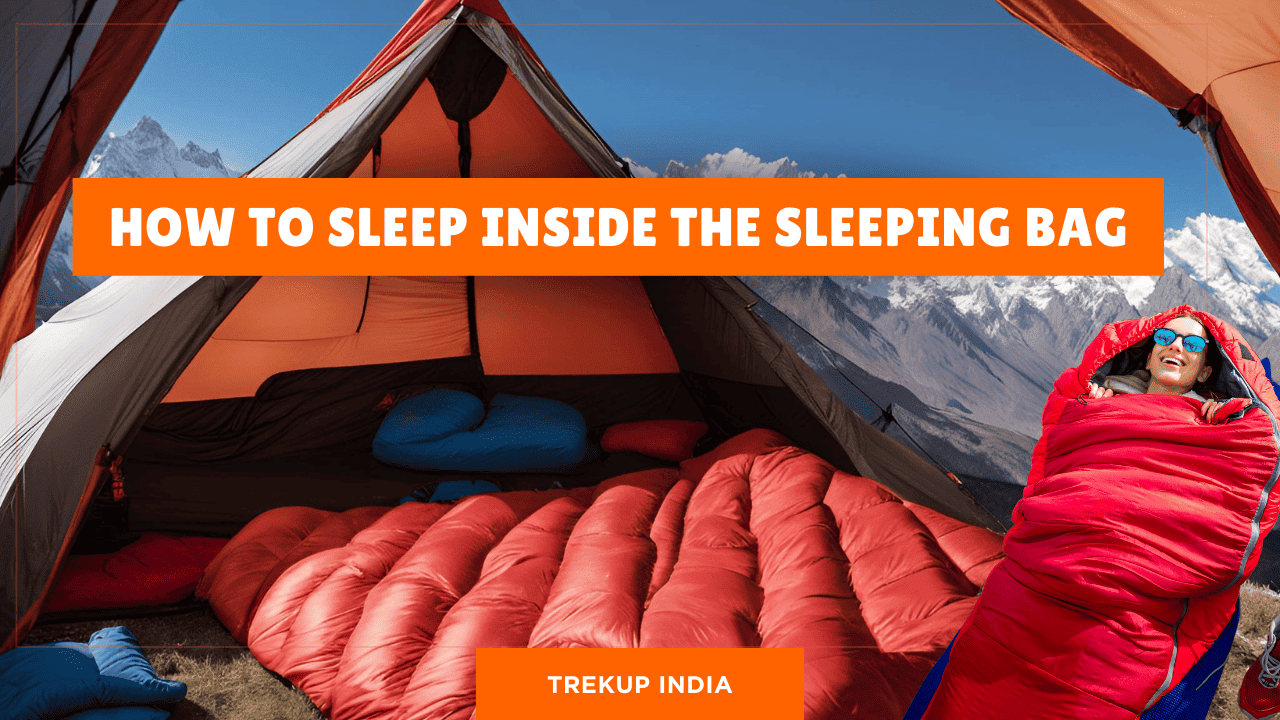
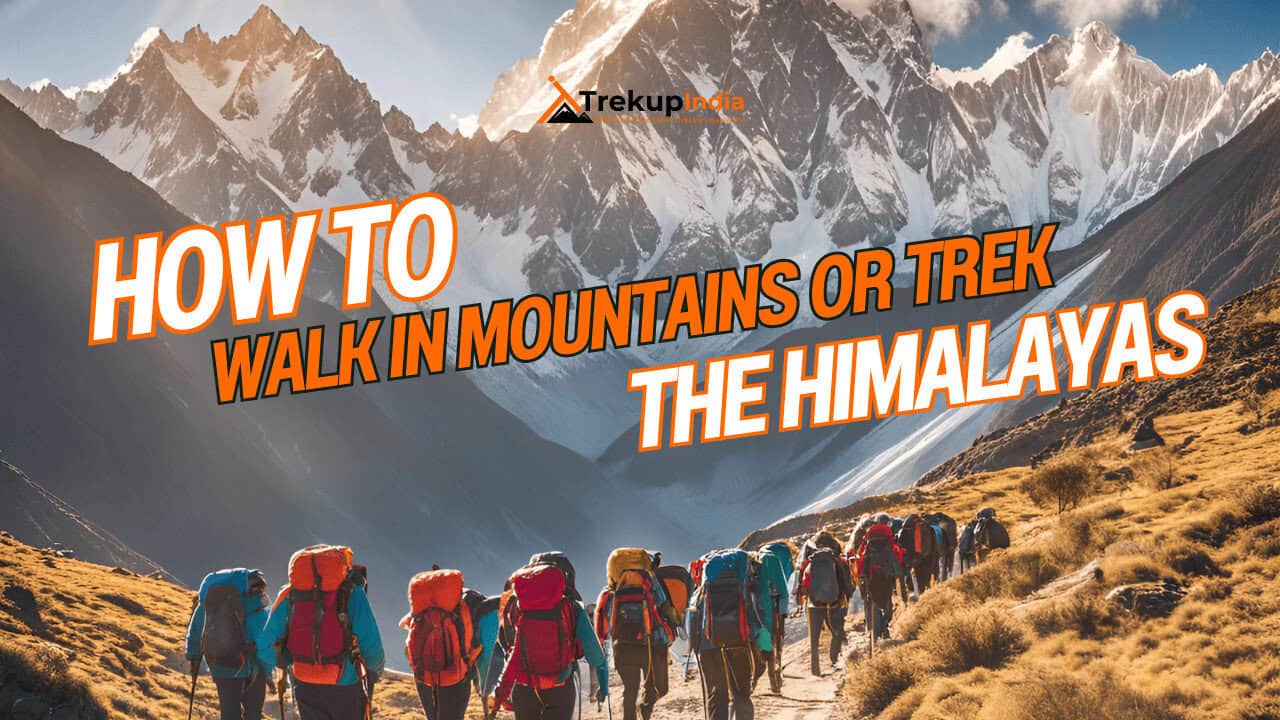
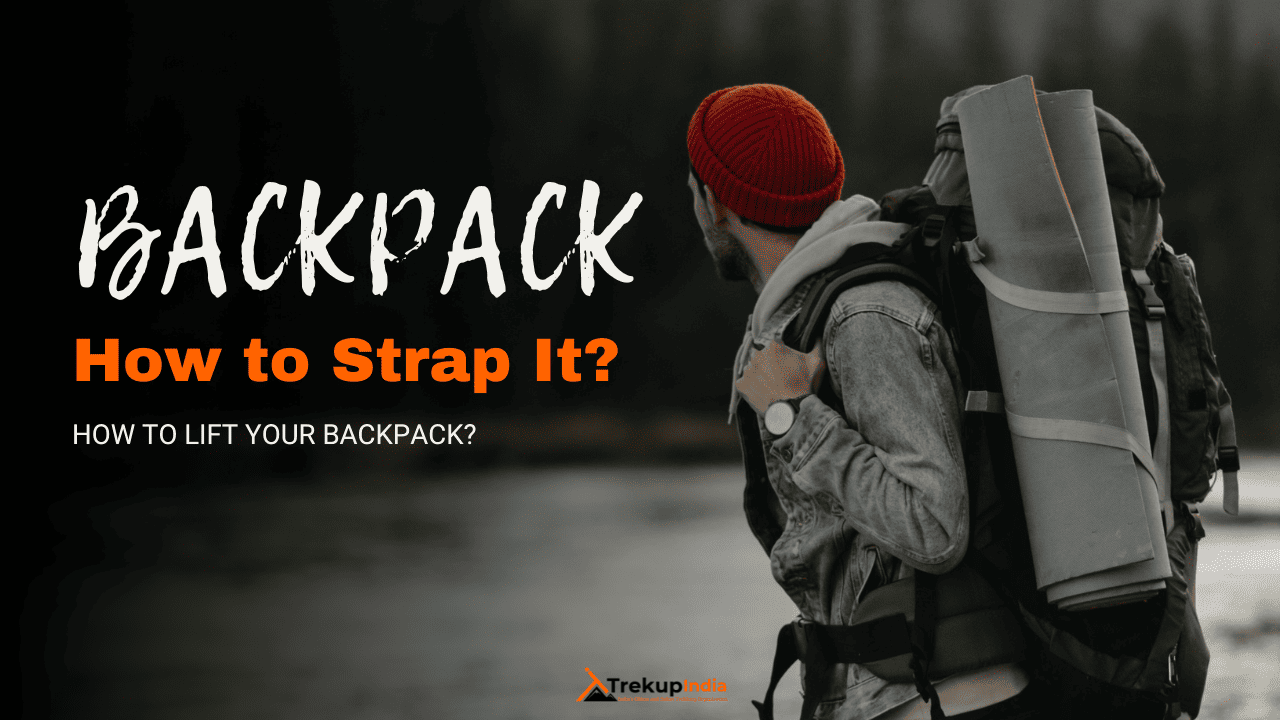
Know Everything About Acute Mountain Sickness
Acute Mountain Sickness occurs when people trek to high altitudes above 8,000 feet. This condition itself develops further due to reduced oxygen levels at such heights. Basically, as you go higher up, the air pressure and oxygen levels decrease, which causes the same problem. Acute Mountain Sickness surely causes headache, nausea, vomiting, and dizziness in affected persons. Moreover, peoples also experience difficulty in sleeping during this condition. To avoid mountain sickness, you should actually trek up slowly to higher altitudes. To learn further about this condition itself, watch the videos by Trekup India.
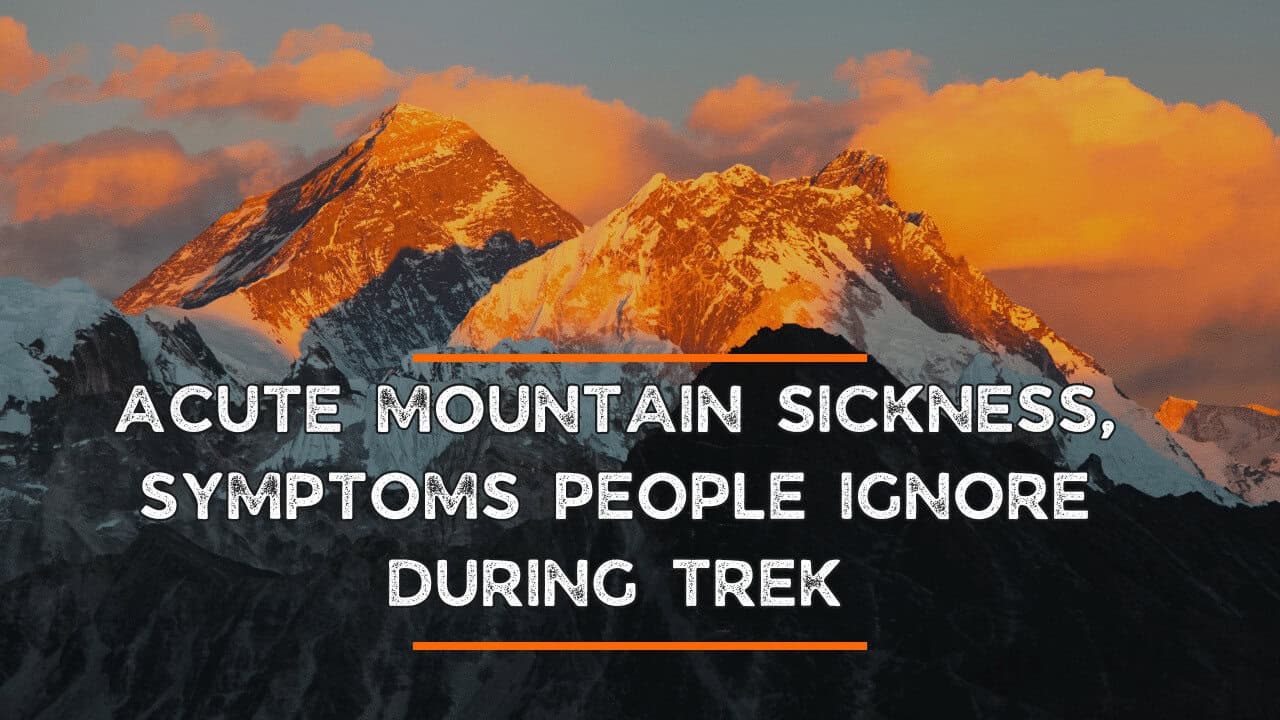
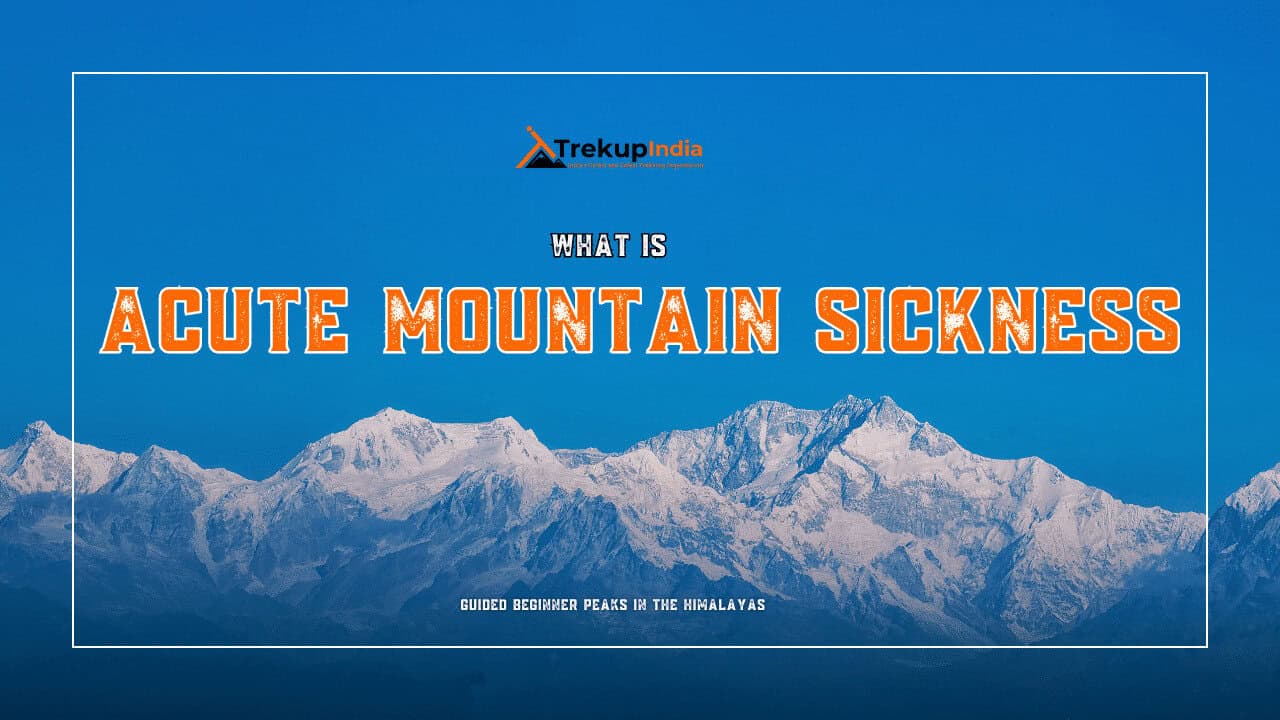
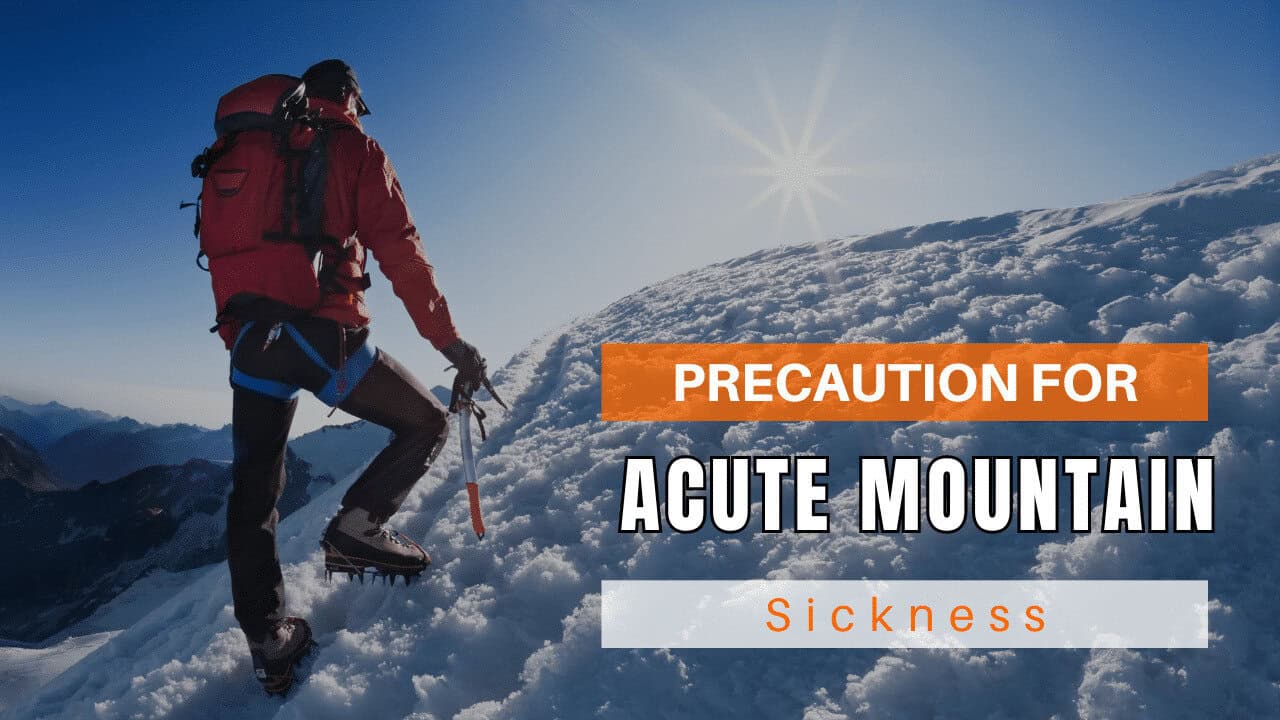
Day Wise Detailed Itinerary of Sar Pass Trek
Day 01: Kasol - Grahan Village by Trek
- Altitude Gain: Approx. 2123 Ft / 650 Mtrs.
- Altitude: Kasol (5577 ft / 1700 Mtrs.), Garhan Village (7700 ft / 2350 Mtrs.)
- Trek Distance: 10 Kms
- Trek Duration: 7-8 Hrs
- Trek Grade: Gradual – Moderate
- Overnight stay will be at Homestay
Meal: Lunch & Dinner Only.
The Sar pass trek begins in Kasol, Himachal Pradesh. From there, the trail follows the Parvati River, which passes through Grahan Village and is known as Grahan Nalah. The trek from here is easy, as villagers usually take it, and you can enjoy the scenic view. The trek from here is approximately 10 km after you pass through the dense coniferous forests and the aroma of pine trees. You will come to a clearing where you will see grassland, and on the side, you will see local vendors selling tea and snacks. Here the locals also sell rhododendron syrup made from the Buras flower (rhododendron). From there on, it is a steep climb until you reach Grahan Village, where you will stay at our homestay and have lunch. If you desire, you can explore the village or the surrounding hills. Rest of the evening at leisure.
Day 02: Grahan – Min Thach by Trek
- Altitude: Garhan Village (7700 ft / 2350 Mtrs); Min Thach (11,155 ft / 3400 m)
- Altitude Gain: Approx 3455 Ft / 1050 Mtrs.
- Trek Distance: 7 Kms
- Trek Duration: approx 4-5 Hrs
- Trek Grade: Gradual- Moderate
- Overnight stay at Trekking Tents
- Meal: Breakfast, Lunch & Dinner Only.
Today morning woke up with a hot cup of Himalayan black tea; after that, along with our trek leader, we practiced some light exercises followed by basic yoga and meditation in the calm mountains and enjoyed a delicious breakfast prepared by Trekup India’s high altitude mountain chef. After that, we were on our trail from the Grahan Village trek toward the north. The climb from here is gentle, often taken by the villagers to reach Min Thach. After walking through the meadows, you will come to a dense forest where the treks become a little steeper and more confusing. There will be some clearing in the forest to set up a tent at Min Tach. On reaching Trekup India campsite, we will be assisted to check into the camps, and rest of the evening at leisure, followed by evening tea and snacks, evening briefing for the next day’s plan, delicious dinner, and a good night’s sleep.
Day 3: Min Thach – Nagaru by Trek
- Altitude: Min Thach (11,155 ft / 3400 m); Nagaru (12467 Ft/ 3800 Mtrs)
- Altitude Gain: Approx 1312 Ft / 400 Mtrs.
- Trek Distance: 6 Kms
- Trek Duration: Approx. 4 Hrs
- Trek Grade: Gradual- Moderate
- Overnight stay at Trekking Tents
- Meal: Breakfast, Lunch & Dinner Only.
Wake up to a beautiful Himalayan morning with the natural alarm of birds chirping, and follow the daily routine of exercise, meditation, and warm breakfast to have an idea from Min Thach, Nagaru is not that far, and it can be seen from your current campsite, after passing through the forest, you will climb a rocky ridge to reach Nagaru, enroute you might find snow which makes the trail tricky and risky. You must be cautious; trekkers must know how to cross or walk on snow. The expert Trek leader of Trekup India will help and assist in all manners to successfully walk and cross the snow. Nagaru is a flat area at the top of the hill. It is mesmerizing and rare; you have an amazing view of Min Tach and Garahan Village from the campsite. During the night time, the temperature dips; hence Trekup India recommends and advises all its trekkers to carry appropriate clothing to keep themselves warm and cozy during night chilling nights when in adventure.
Day 04: Nagaru – Biskeri Thach via Sar Pass by Trek
- Altitude: Nagaru (12467 Ft/ 3800 Mtrs); Sar Pass (13780 Ft/ 4200 Mtrs), Biskeri Thach (10991 Ft. / 3350 Mtrs)
- Altitude Gain: Approx 1313 Ft / 400 Mtrs.
- Altitude Loss: 2789 Ft./ 850 Mtrs.
- Trek Distance: 14 Kms
- Trek Duration: Approx. 7-8 Hrs
- Trek Grade: Moderate -Difficult
- Overnight stay at Trekking Tents
- Meal: Breakfast, Lunch & Dinner Only.
- Note: this day they will start early morning trek at 02:30 am towards Sar Pass
Wake up for an exciting morning, and we start a bit early as it will be one of the longest but indeed exciting from here on; today, we will be climbing through the ridge line in a southward direction; here, you will find a few steep stretches. There will be snow patches on the way, which will be easy to go through, and beautiful sights to see; you will be climbing another hill that is a little sharper and steeper. Caution must be made, too, while crossing. Once you have surpassed the difficult trek, you will see the beautiful sight of Sar Pass. From the pass, enjoy the breathtaking peeks around Tosh Valley. The final descent from the pass is entertaining as we slide down towards the valley on the snow, be prepared for sliding on snow; however, strictly follow all necessary instructions provided by the Trekup India trek leader. By evening well in time, we reach our campsite at Biskeri; we might get some mobile network here to get in touch with our family and friends you have saved some charge of your phone. Evening at leisure time for complete relaxation after such a long day.
Day 5: Biskeri Thach – Pulga and Return to Kasol by Drive
- Altitude: Biskeri Thach (10991 Ft. / 3350 Mtrs); Barshaini (7874 /2400 Mtrs)
- Altitude Loss: 3117 Ft./ 950 Mtrs.
- Trek Distance: 6 Kms
- Trek Duration: approx 4-5 Hrs
- Trek Grade: Easy
- Meal: Breakfast, Lunch Only.
On the final mountain morning, we start with our morning routine and commence on our last day of the trek through the slightly steep trail. You will go across a stream and pass through fenced land. The Sar Pass Trek trail ends at a fenced plot; after crossing land, you will be back on the trail, and from there, the trail will lead into the dense forest, where you will find trails going in all directions, but you must follow the northeast one. After walking through the forest, you must pass through another stream. Crossing the stream is tricky as you must rappel through huge rocks. Then you would have to walk through wooden planks, climb a bit to reach the trail, and then follow the water pipeline to Pulga village, one of the twin villages of Pulag and Tulga village. From Tulga, you must cross the Parvati River to reach Barshaini, which is the endpoint of the trek; from here, we hop into our vehicles and drive to Kasol; from here, you have your further plans and arrangements.
Sar Pass Trek Route Map
We’ve prepared a comprehensive Trek Route Map for your upcoming adventure to Sar Pass Trek, which outlines the entire journey including all stops and trails. This map provides detailed information on the terrain, distance between points of interest, and estimated travel time to help ensure a safe and enjoyable trek. We’ve carefully curated the map to ensure that you have all the necessary information at your fingertips. Please take a moment to review it thoroughly, and don’t hesitate to reach out if you have any questions or concerns.
Sar Pass Trek Altitude Chart
The Trek Altitude Chart is a useful tool for Trekkers to monitor their altitude changes during their rides, allowing them to plan their routes more efficiently and track their progress over time. This Sar Pass Trek chart is beneficial for both casual and experienced Trekkers, helping them make the most out of their Trek experience.
Trek Cost Inclusions
- Stay: 1 night home stay on Sharing Basis and 3 Nights tented accommodation at respective campsites of Trekup India on twin sharing basis.
- Meals: Trekup India provided cooked meals during the trek starting with Lunch on Day 01 to Lunch on day 05 lunch (Meals are simple, nutritious and vegetarian and non-repeated meals)
- Transport: Barshaini to Kasol on sharing jeeps
- Trek Insurance (Optional) at extra cost: Trekup India recommends that all trekkers consider getting trek insurance. This is optional, but highly recommended. Trek insurance covers unexpected events that may occur during your trek. The cost of the insurance starts from INR 210. Please read more about what is included in the coverage and why it is mandatory on treks.
- Trek Equipment: Sleeping bag, Sleeping tents, Kitchen tent, Dining tent, Toilet Tent.
- Amenities: All utensils, sleeping mattresses (Black foam mats), Crampons, and Gaiters for snow.
- Health & Safety: First Aid Box, Oxygen Cylinders, Stretchers, Oxi meters, BP Machines, health.
- Permits: Forest Permits and Camping Permission Fee
- Trek Crew: High Altitude Chef, Helpers, Trek Leader & Guides, and other support teams.
- Potters & Mules: Potters and Mules are to carry all trekking equipment, ration, and vegetables.
Trek Cost Exclusions
- GST 5% (it is Mandatory)
- Any Meals/accommodation beside the itinerary or not mentioned in the program.
- Any Bus / Airfare to/from trek start/end point
- Personal Medical expenses do carry your medication.
- Any personal services such as Laundry, phone calls, liquors, mineral water, etc.
- Any still / video camera fee
- Any Entrance fee Monuments, Monasteries, Museums, Temples – Pay directly on the spot.
- Mules or porter charges to carry private baggage (Offload Charges for bag INR 9,60 per day, For Whole Trek – INR 4,800 per bag. Note: Bag weight should not be more than 11 kg.
- Any emergency evacuation charges
- Any services that are not mentioned in the cost inclusion section.
What should you pack for the Sar Pass Trek
Sar Pass Trek is a high-altitude trek. The trekking gear you have to have for this particular trek differs from normal treks. Thus, read this whole segment. There is an important question that the trekker who is doing trek asks, like what all things to carry while trekking. Below, we have provided the details on everything you should take; an easy way to remember is by Head to foot or foot to head. We have prepared from Head to foot.
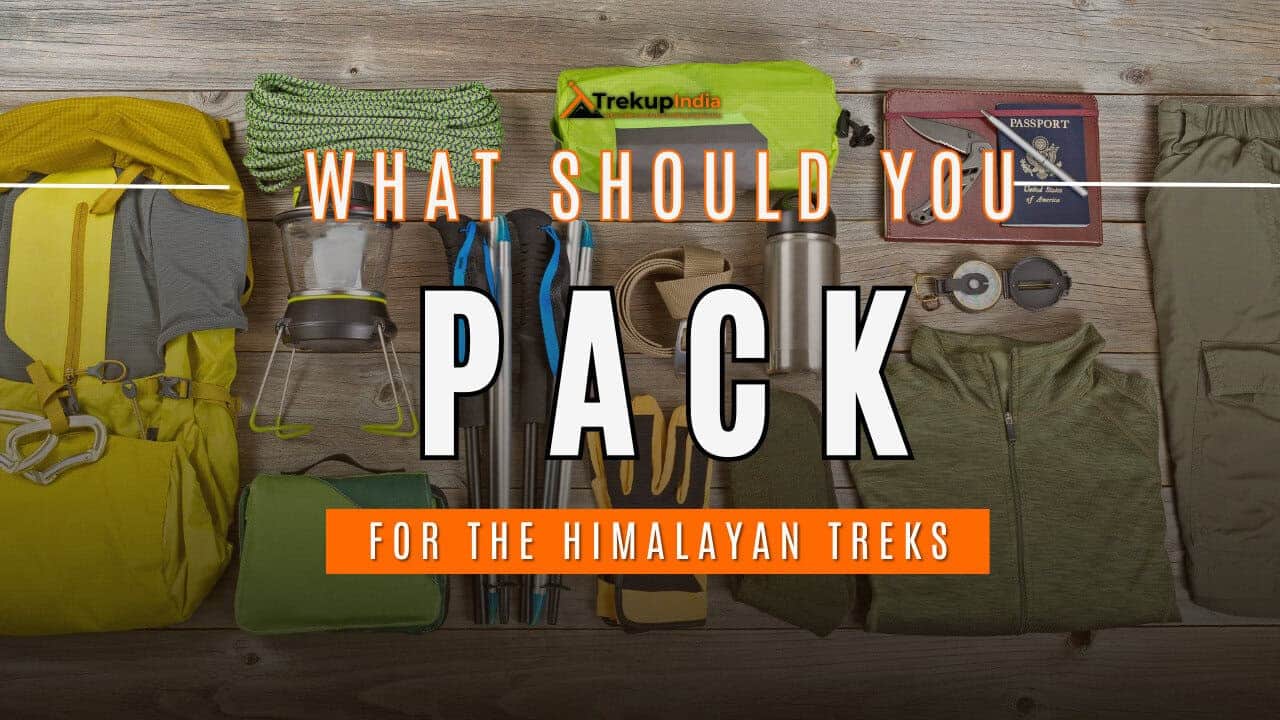
Head Gears
When trekking it's important to carry headgear to protect your head and face.
Heading out for a trek? Don’t forget to carry headgear to protect your beautiful face and head from the sun, wind, and dust! It’s an essential accessory that keeps you safe and comfortable throughout your adventurous journey. So, make sure you pack it before you step out into nature!
- Head Lamps – When trekking at night, headlamps are essential to illuminate your path while keeping your hands free. Headlamps come in different sizes and lumens, so it is essential to choose one that suits your needs.
- Hats or Cap – Caps or hats are also necessary when trekking in different weather conditions. Caps protect your head from the wind and freezing temperatures at night, while hats provide shade and protection from the sun during the day. It’s essential to ensure that your hat has a strap to prevent it from being blown away by the wind.
- Sunglasses – Sunglasses are also essential for trekking. Your sunglasses should protect your eyes from harmful UV rays and fit your face perfectly to avoid falling off while climbing, jumping, or crossing obstacles. The glass of your sunglasses should also be designed for different weather conditions to provide optimal visibility.
- Buff / Balaclava – Lastly, a buff or balaclava is a must-have to protect your mouth or neck from extreme temperatures and keep them warm. Buffs and balaclavas come in different materials, thicknesses, and designs, so it’s important to choose one that suits your needs and preferences. Depending on the weather conditions and your activities, you can wear them as neck warmers, face masks, or headbands.
Clothes
When trekking in high altitudes, prepare for cold weather by wearing layers. Layering traps heat, keeps you warm, and allows you to easily adjust your clothing as temperatures fluctuate.
Layering is important for different seasons when trekking. When planning a high-altitude trek, it is important to prepare for the cold weather. Wearing layers is the best approach as it provides both protection and flexibility when the weather changes frequently in the mountains. Layering helps to trap heat and keep your body warm, while at the same time allowing you to easily adjust your clothing as the temperature fluctuates. By wearing layers, you can enjoy your trek comfortably and stay safe in the unpredictable mountain weather
- For spring, summer, and monsoon treks, consider wearing three layers: a woollen sweater, a fleece, and a padded jacket.
- For autumn treks, add one more fleece layer to make it four layers.
- For winter treks, you may need five layers with thermals, a woollen sweater, two fleeces, and a padded jacket.
- T-shirt/sleeve shirt– Bring three T-shirts and two quick-dry trek pants, wearing one and carrying the others. Long sleeve shirts help to protect from sun UV rays. We recommend synthetic T-shirts as they get dry quickly when they get wet.
- Hiking / Trekking Jacket– down jackets (-5 to-10 C) or two-three-layer jackets.
- Thermals– at least two pairs of thermals help keep the body warm during cold weather.
- Undergarments– you can carry them according to your habitual and hygiene requirements.
- Gloves– 1 pair of gloves will keep your hand warm and nice.
- Trek Pants– Bring 2 to 3 comfortable trekking pants. Trekking pants play a significant role, as they are designed for comfort and mobility, making trekking easier. It should be Synthetic so that it gets dry quickly when wet.
- Rain Wear– you can carry a raincoat or Poncho. During long rains and snowfalls, the waterproof jackets start leaking. Still, the Poncho and raincoats keep you dry, so choose accordingly.
Tip: If you choose a raincoat on your trek, carry a small waterproof cover so things inside your backpack can’t get wet. If you carry a Poncho, you don’t need to worry. It protects both you and your backpack.
Foot Gears
When it comes to planning a trek, one of the most important aspects is to ensure that you have the right kind of foot gear.
- Trekking shoes which are waterproof and have ankle support. Walking / Hiking sandals which can be used off the trek, i.e., in the morning and evening hours when you reach the campsite, basically to get your feet rest from heavy boots, sometimes used for crossing streams and rivers, it’s more comfortable and safer than crossing barefoot or wetting your shoes. Sneakers (Optional) can be worn for normal driving days or used around the camp.
- Socks– you should at least carry 3 to 4 pairs.
- Microspikes & Gaitorswill be provided by Trekup India when required. You don’t have to carry them.
Personal First Aid Kit
Don't forget to pack your personal first aid kit! It's always better to be safe. So, make sure you're prepared for any unforeseen circumstances.
Below are some common medicines generally required/used during your adventure trip; however, please consult your doctors prior.
- Antiseptic towel or water syringe (to clean the wound)
- Butterfly bandage for a small cut
- Cotton and elastic bandages and sterile gauze pad for larger wounds
- Latex gloves are used when the wound bleeds.
- Medicine for Diarrhea (Upset stomach)
- Medicine for cold, flue/fever, headache
- Some pain killers
- ORS pouches
- Quick pain relief spray (External use)
- Any personal medicine prescribed by your doctor
- Dimox / Similar for high altitude sickness
- Bug Repellent
- Carry some nutria/energy bars and drinks (non-alcoholic)
- Note: Kindly consult your doctor before purchasing or taking any medicine.
Gadgets and Other Items
You might also consider bringing a camera, binoculars, portable charger, and snacks. Be well-prepared and tackle any trail with confidence.
- Trekking Poles
- Mobile phone
- Camera
- Spare batteries for phone and camera, power bank
- Lightweight flashlight or headlight
- A waterproof bag made of plastic is used for the camera.
- Plug/converter for electrical items
- 1-litre water bottle
- A journal with a pen would be a good idea to keep your notes.
- Some book of your interest for the ideal time
- Get into the habit of maintaining a Map and guidebook of the region.
Hygiene & Personal toiletry
Remember to pack hygiene and personal toiletry items such as soap, shampoo, toothbrush, toothpaste, deodorant, and toilet paper.
- Sunscreen with UV protection to shield your skin from harmful rays
- 1 or 2 small quick-drying towels to help you dry off quickly in case of rain or sweat
- Toilet paper, tissues or wet wipes for maintaining hygiene while on the trek
- Toothbrush, toothpaste, and mouth freshener to keep your mouth clean and fresh throughout the journey
- Deodorant or talcum powder to help you stay fresh and odor-free, especially during hot and humid climates
- Shampoo to keep your hair clean and healthy
- Sanitary pads or tampons (for female trekkers) to manage menstrual cycles
- Lip-gloss or salve to protect your lips from dryness and chapping
- Bio-degradable soap to keep yourself clean and hygienic while on the trek
- Nail clipper and other personal items that you use daily
Compulsory Documents to Carry
There are certain documents that you should always carry with you. These documents are not only necessary for your safety and security, but they may also be required by local authorities.
These files must be submitted to the Forest Department before your trek. With none of these, you will not be permitted to trek—original and photocopy of government photo identity card. Carry IDs like Aadhaar, voter ID, etc.
How To Plan Your Trek & Reach Kasol
If you’re planning a trip to Kasol in Himachal Pradesh, India, there are several options available for you to get there. Let’s delve into each of these options in detail:
By Road: One of the most common ways to reach Kasol is by taking an overnight bus journey from Delhi or Chandigarh. There are two options to choose from. The first option is to reach Chandigarh first and then take a bus to Kasol. The journey typically takes around 10 hours. The second option is to reach Kullu first and then hire a private taxi or shuttle bus to reach Kasol. Following this route, you can catch an overnight bus to Kullu, then take a taxi or shuttle bus to Kasol. Regardless of the option you choose, it’s advisable to take government-run buses instead of private buses when departing from the bus station, as private buses are more likely to experience delays. Government buses are known for their reliability. Regardless of your choice, make sure to arrive in Kasol by 9 a.m. at the latest.
By Air: While flying to Bhuntar Airport is an option, we advise against it due to the expensive fares and frequent flight cancellations. However, if you do choose to fly to Bhuntar, Kasol is only a short distance away, and you can easily find transportation by bus or private taxi. If you opt for this route, it’s recommended that you arrive at least a day before the trek’s starting date. The best option is to fly to Chandigarh Airport and then take a bus to Kasol.
By Train: You can also travel by train and get off at Pathankot railway station, which is around 300 km from Kasol. From there, you can catch direct buses to Kullu/Kasol. The journey usually takes an overnight journey. It’s advisable that you reach Kasol a day before your planned trip.
In conclusion, if you’re planning a trip to Kasol, you have several options to choose from, each with its own benefits. Regardless of the route you choose, it’s important to plan your journey in advance and arrive in Kasol with ample time to enjoy your trip.
Fitness Required & Preparation Guide For Sar Pass Trek
If you’re preparing for a Sar Pass Trek, Trekup India recommends jogging as part of your fitness routine. Jogging helps work out the same muscle groups that you’ll use during trekking and can help you build endurance. You don’t need any special equipment to get started.
Fitness Target
Trekup India has put the Sar Pass Trek into an easy to moderate grade-level trek.
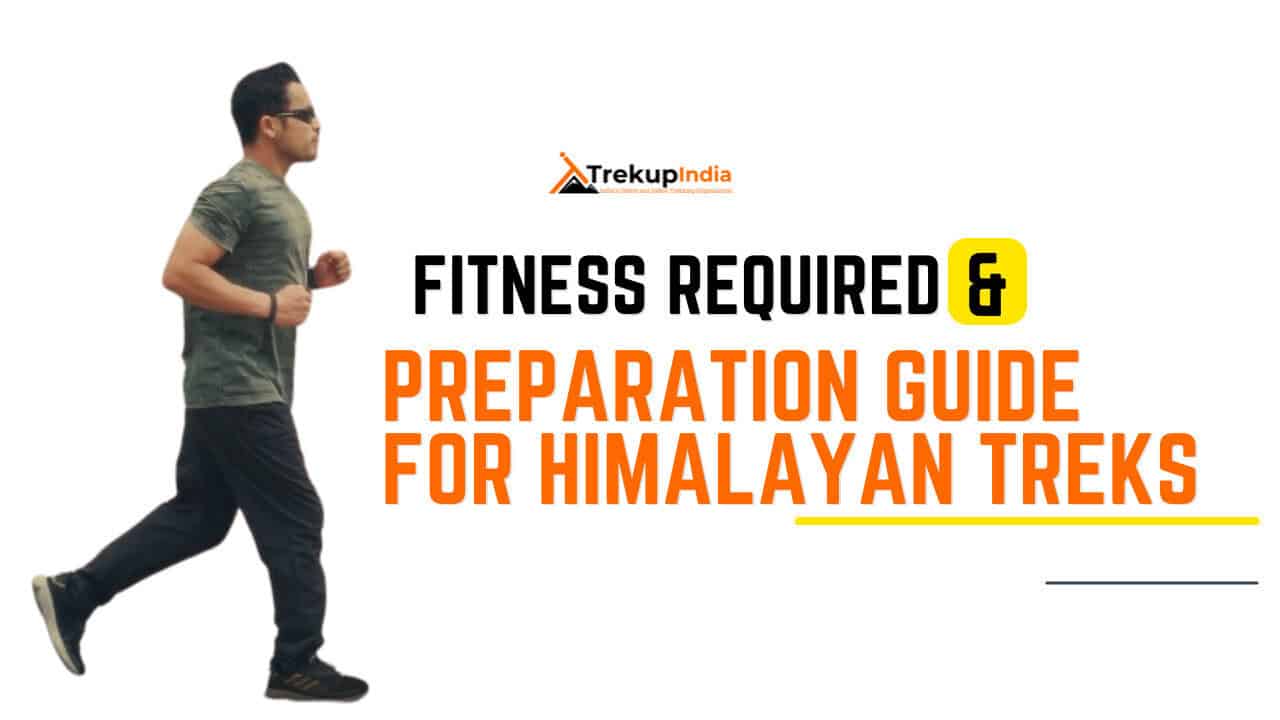
For Easy – Moderate Treks – In order to be well-prepared for your upcoming trek, it is recommended that you focus on building your endurance by aiming to cover a distance of 4.5 kilometers in less than 45 minutes. This will help you to develop the necessary stamina and strength required to successfully complete your journey.
How to Achieve This Fitness Target?
To start preparing for your trek:
- Try jogging for at least five days every week.
- If you find 5 km too difficult at first, begin with 2 km and gradually increase over 2-3 weeks.
- Once you feel more comfortable running 5 km, focus on improving your speed gradually on a daily basis.
It is important to ensure that you can consistently complete 4.5 km in under 40 minutes for at least two weeks before your planned trek. Allow yourself 6-8 weeks to prepare physically for the journey.
Strength Training exercises that benefit Trekking
Trekking is an activity that demands a good level of strength.

Trekking is a demanding activity that requires good cardiovascular endurance, muscular strength, and overall fitness. To help you prepare for your trek, incorporating bodyweight exercises into your training routine can be an effective way to build strength, improve stability, and enhance endurance, all of which are crucial for a successful trek. In this regard, here’s a breakdown of body weight exercises categorized by the specific body parts they target and the benefits they offer during trekking.
1. Lower Body Exercises
Lower body exercises like squats and lunges are great for building lower body strength, essential for trekking.
a. Squats
Squats are an excellent exercise for building lower body strength, essential for trekking. They target the quadriceps, hamstrings, glutes, and calves. Solid quadriceps and glutes provide power for ascending and tackling uphill climbs, while vital hamstrings aid stability during descents. This is particularly helpful in navigating uneven terrain during trekking.
How to perform Squats Exercises:
- Stand with feet shoulder-width apart, toes pointing slightly outward.
- Lower your body by bending your knees and hips, keeping your back straight.
- Lower until your thighs are parallel to the ground or as low as comfortable.
- Push through your heels to return to the starting position.
b. Lunges
Lunges target the quadriceps, hamstrings, glutes, and calves. They improve lower body strength, balance, and stability, crucial for maintaining control on rocky trails and steep slopes. Additionally, they enhance flexibility, reducing the risk of injury while trekking.
How to Perform Lunge Exercises:
- Stand with feet hip-width apart, hands on hips or sides.
- Take a step forward with one foot, lowering your body until both knees are bent at 90-degree angles.
- Push through the heel of your front foot to return to the starting position.
- Repeat on the other side, alternating legs.
2. Upper Body Exercises
Upper body exercises such as push-ups and pull-ups effectively strengthen the upper body, especially the chest and shoulders, which are essential for carrying a backpack during treks.
a. Push-Ups
Targets: Chest, shoulders, triceps, and core.
Benefits for Trekking: Push-ups are an effective exercise to strengthen the upper body, especially the chest and shoulders, essential for carrying a backpack during treks. Improved upper body strength will also help maintain posture and stability while traversing challenging terrain.
How to Perform Push-Ups Exercises:
- Start in a plank position with hands shoulder-width apart and body in a straight line from head to heels.
- Lower your body by bending your elbows until your chest nearly touches the ground.
- Push through your palms to return to the starting position.
- Keep your core engaged throughout the movement.
b. Pull-Ups/Bodyweight Rows:
Targeting the back, biceps, and shoulders can significantly benefit trekking. You can strengthen these muscle groups by performing pull-ups or bodyweight rows and improve your posture and balance while carrying a backpack. Additionally, more muscular back muscles can help reduce the risk of back strain and fatigue during long treks, making your journey safer and more comfortable.
3. Core Exercises
Core exercises like planks and Russian twists can help strengthen the core muscles, which are crucial for maintaining stability and balance while trekking on uneven terrain.
a. Planks
Targets: Abdominals, obliques, and lower back.
Benefits for Trekking: Planks are an effective exercise that helps strengthen the core muscles. These muscles are crucial for maintaining stability and balance while trekking on uneven terrain. A strong core also helps improve posture, reducing the risk of back pain and fatigue during extended hikes.
How to Perform Planks Exercises:
- Start in a plank position with elbows directly under shoulders and body in a straight line from head to heels.
- Engage your core and hold the position, avoiding sagging or arching the back.
- Keep breathing steadily and hold for the desired duration.
b. Russian Twists
Targets: Obliques, abdominals, and lower back.
Benefits for Trekking: Russian twists engage the core muscles, particularly the obliques, improving rotational stability and balance. Enhanced core strength helps prevent injuries and improves overall performance during trekking.
How to Perform Russian Twist Exercises:
- Sit on the ground with knees bent and feet flat, leaning back slightly to engage the core.
- Clasp hands together and twist the torso to one side, bringing the hands towards the ground beside the hip.
- Return to the centre, then twist to the other side.
- Continue alternating sides for the desired number of repetitions.
4. Full Body/Cardiovascular Exercises
Full-body/cardiovascular exercises like burpees and mountain climbers are excellent for improving cardiovascular endurance, strength, and agility.
a.Burpees
Burpees are an excellent full-body exercise that targets your legs, chest, arms, and core. This exercise dramatically benefits trekking enthusiasts, improving cardiovascular endurance, strength, and agility. Regularly incorporating burpees into your workout routine can enhance your overall fitness level, which can help you endure long hikes and rugged terrains with ease.
How to Perform Burpees Exercises:
- Start in a standing position.
- Squat down and place hands on the ground.
- Jump feet back into a plank position.
- Perform a push-up.
- Jump feet back to the squat position.
- Explosively jump up into the air, reaching overhead.
- Land softly and repeat the sequence.
b. Mountain Climbers
Mountain climbers target the core, shoulders, chest, and legs. This dynamic, full-body exercise can significantly improve cardiovascular endurance and agility. It is an excellent functional workout for trekking preparation as it engages both the upper and lower body muscles while strengthening the core muscles.
How to Perform Mountain Climbers Exercises:
- Start in a plank position with hands shoulder-width apart and body in a straight line from head to heels.
- Drive one knee towards the chest, then quickly switch legs, alternating in a running motion.
- Keep the core engaged and the hips stable throughout the movement.
- Continue at a moderate to fast pace for the desired duration.
Incorporating bodyweight exercises into your training routine can help you build strength and endurance and prepare your body for the physical demands of trekking. Consistency and proper form are crucial to maximizing the benefits of these exercises and ensuring a safe and enjoyable trekking experience. Engaging your core muscles, including obliques, abdominals, and lower back, with Russian twists can improve your rotational stability and balance, preventing injuries and enhancing overall performance during trekking.
When incorporating strength training exercises into your workout routine, it’s essential to maintain proper form and technique to avoid injury. Start with lighter weights and gradually increase the intensity as you progress, focusing on compound exercises targeting multiple muscle groups simultaneously. Some examples of practical strength training exercises for trekking include squats, lunges, deadlifts, and pull-ups.
Remember to give your muscles time to recover between workouts, and remember to stretch before and after your workouts to prevent injury and improve flexibility. Combining strength training with jogging and proper stretching allows you to take your fitness to the next level and confidently tackle even the most challenging treks.
Our Trekkers Reviews And Expreinces
Food Provided by Us During Trek
We provide only Indian vegetarian food, and your meal will mainly consist of Indian bread, vegetables, lentils, rice, and a delicious dessert. During your trek, we will serve three meals a day, including breakfast, lunch, and dinner. You will also be served tea, snacks, and lip-smacking soup in the evening before dinner. If it is a long day of trekking, you will be given a packed snack.
After extensive research on the trekkers’ nutritional requirements, we prepare the menu. Before putting all the meals together, we also consider the altitude and the weather.
The meal we serve during the trek is perfectly balanced with calories, carbohydrates, vitamins, protein, fibre, and minerals. You need to know that all our cooks have great expertise in cooking and have undergone thorough training. So, get ready to enjoy delectable and lip-smacking dishes during your trek. You will be served with lemon tea in the tent to start your day with a refreshed feeling. Before leaving the campsite for trekking, you will be given a hot finger-licking breakfast like upma, Aallu Prantha, Besan Chilla, Poha, Daliya, Corn flakes, and Maggie, along with tea or coffee.
If your trek is longer, we also offer some fresh local fruits such as apples and healthy drinks like Frootie or Maaza. In the afternoon, you will be served a simple & healthy lunch, while at around 04:00 pm, you will be given tea and a light evening breakfast. After you reach your campsite at night, you will be served a hot and delightful dinner.
After reading this, you must have understood the food we provided on the trek; you don’t need to worry about food. Many trekkers repeatedly trek with us because of the food we provide. Thus, we will give you unforgettable experiences.
Safety During Sar Pass Trek
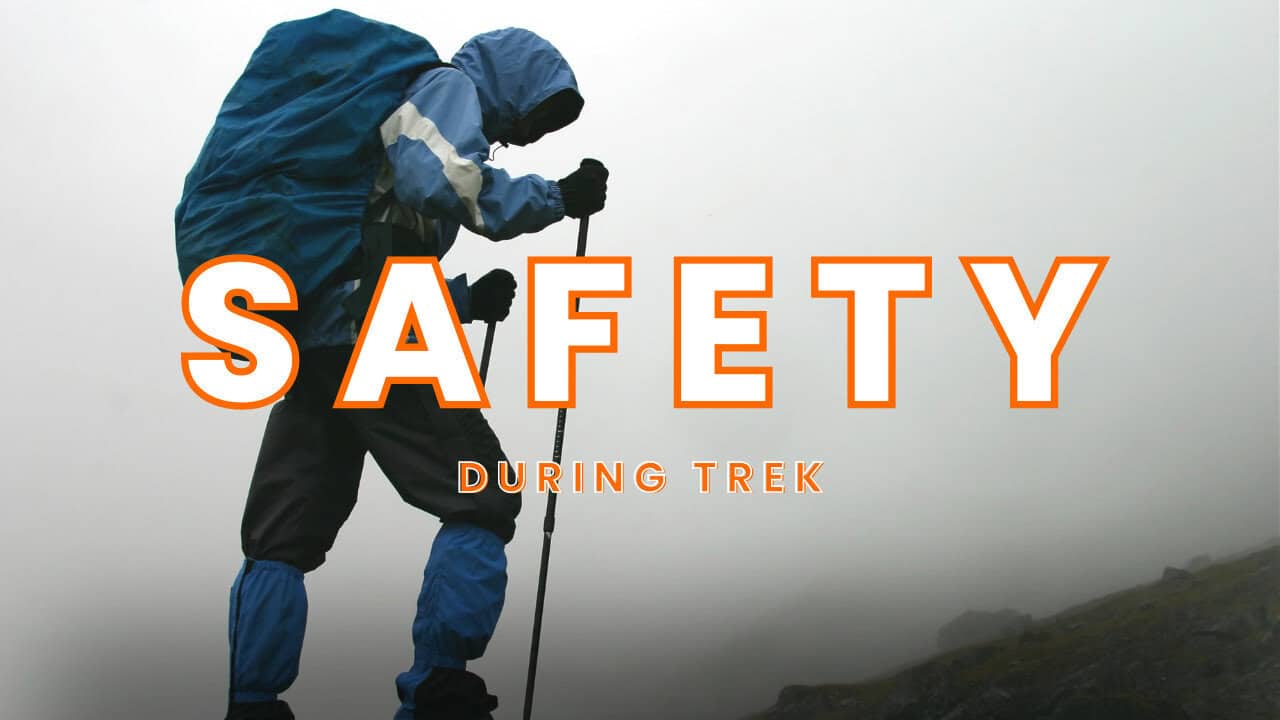
Trekking with us for the Sar Pass Trek is entirely safe because we have a team of trek leaders qualified in Wilderness first-aid and complete information about the high-altitude glitches. During the trek, we carry a full first-aid kit that contains all the essential medicines. Before trekking with us, you must ensure that you are medically fit for the trek; for us, your medical fitness is more important than anything else.
Right from our establishment, we at Trekup India have been continuously introducing new safety practices into Indian trekking to ensure the safety of voyagers. Trekup India introduced microspikes and made emergency bottled oxygen mandatory for all treks. Our trek leaders take your daily Pulse oximeter reading. We at Trekup India introduced the radio walkie-talkie as a safety communication device.
How can we ensure that your trek is safe with us?
We have noticed that most trek-organizing organizations do not follow these systems, but with time, they are following us; several competing companies are adopting these practices and organizing great, safe treks.
We ensure complete technical safety in the mountain. Our company has a vast team of more than 100 guides and trek leaders who serve on Himalayan treks. One of the best things about our team is that all the members are trained professionally by the Nehru Institute of Mountaineering, Indian Mountaineering Foundation Delhi, and Hanifle Center Outdoor Education Mussoorie.
Explore our New Safety Protocols
To ensure a perfect Trek, we have introduced some new safety checks to ensure excellent safety for our trekkers.
Our On-trek safety checks include:
- Daily oxygen saturation, along with pulse readings
- Stretchers team appointed on every trek
- Radios
- Trained mountain staff and complete safety
- Additional oxygen cylinders
- Special medical kit for high-altitude treks
- Microspikes on all types of snow treks
- Experienced Trek leaders, as well as safety
- Technical team on all snowy slopes
For Us, Your Safety Is the Top Priority
At Trekup India, you will find a team with local knowledge and fluency in English and Hindi. This helps ensure that you have a fantastic trek. Not only this, but we also pay attention to your health and safety because this is something we cannot ignore. All the team leaders involved in trekking have already undergone several professional courses in first aid, portable altitude chamber training, CPR, environmental awareness training, and advanced wilderness emergency medicine.
We also carry a complete first aid medical kit on every trek and trip we organize. Apart from the medical kit, we take a portable altitude chamber (if needed) and medical oxygen for all high-altitude treks. Our company has significant expertise in organizing all sorts of group adventure holidays for family groups, school and college groups, and friend groups. We have many travel options that suit different fitness levels and travelling styles.
Regardless of the group size, we value each and every member of our trekking groups. Our commitment to personal attention ensures that your needs and safety are always our top priority.
Who we are?
Trekup India has been a stalwart in the Adventure Tourism industry for 30 years. Since our inception, we have been dedicated to providing top-notch treks, voyages, trekking programs, and high-altitude expeditions. Our extensive experience is a testament to our commitment to your adventure and safety.
We organize treks in Uttarakhand, Kashmir, Sikkim, and Himachal while being part of the trekking community; we feature more than 75 documented Himalayan treks. In addition to other outdoor activities, our company also organizes trips for schools, colleges, and families.
Therefore, we maintain the quality of services offered to our valuable customers.
Must Read These Information Of Sar Pass Trek
Why You Should Do Sar Pass Trek?
The Sar Pass trek is meant for people who want to trek but are not professionals and want to be as close to snow-covered mountains. While trekking, you can enjoy the hospitality of the locals as you pass through various villages. It is a great experience for people who want to experience mountain life. It is an unforgettable experience to see lush green meadows, a forest, and snow-covered hills. You test your physical and mental endurance as you pass through difficult terrains like ridges and snow-covered trails. You enjoy the scenic view of the river gushing through the rocks, walk on the bridges, and watch the river from close.
Best time to do Sar Pass Trek
Sar Pass Trek is best done during Summertime, between mid-April and June, or Autumn, between September and mid-November. As you can see, the panoramic view is because of the clear sky. Changing weather makes you enjoy the different shades of weather, like changing color. In the summer, wildflowers are in full bloom, with the mountains covered in lush green. In winter, you can enjoy snow covering the trail and hills all around.
How Difficult is the Sar Pass Trek
The Sar Pass trek in the Parvati Valley of Himachal Pradesh, India, is considered intermediate difficulty. Here are the factors that contribute to its level of challenge:
Elevation Profile:
The Sar Pass trek reaches its highest point at the pass, standing at approximately 4,220 meters (13,845 feet) above sea level. While this is a considerable altitude, it’s relatively moderate compared to other Himalayan treks.
Climbing Challenges: The trek involves a significant ascent, which can make acclimating to the higher elevations difficult and increase the risk of altitude-related illnesses.
Trail Characteristics:
The trekking route offers diverse landscapes, including dense forests, grassy meadows, rugged rocky terrain, and snow-covered trails, particularly near the pass.
Seasonal Obstacles: Depending on the time of year, trekkers may encounter snow and ice along the route, especially when crossing the pass, which requires caution and attention to ensure safe passage.
Mountain weather can be notoriously erratic, requiring trekkers to be equipped for various conditions, including precipitation, snow, and drastic temperature fluctuations, particularly at elevated heights.
Physical Conditioning is Essential: The trek demands a good level of physical fitness, requiring the ability to withstand extended periods of walking (typically 5-7 hours daily) and the capacity to tackle challenging inclines and declines.
Preparation is Key: While prior experience with high-altitude treks is advantageous, it’s not a requirement. However, trekkers should commit to a regular fitness regimen that builds cardiovascular endurance, strength, and hiking proficiency.
Trek Duration: The Sar Pass trek typically spans 5-7 days, although the exact duration may vary depending on the specific itinerary and the group’s pace.
Guided Support: Many trekkers participate in guided treks led by experienced companies or local guides, which can significantly simplify the journey by handling logistics such as route navigation, camp setup, and meal preparation.
Embarking on a Solo Journey: Trekking without a guide demands a higher level of autonomy and route-finding expertise.
Ideal Trekking Period
Peak Seasons: The most suitable times to embark on the Sar Pass trek are from mid-April to May and September to October when the climate is relatively calm, and the trail conditions are conducive to hiking.
Essential Preparations
Fitness Regimen: Get in shape with a workout routine incorporating cardio, strength training, and backpacking exercises.
Equipment: If you’re not joining a guided tour, ensure you’re equipped with the right gear, including warm attire, sturdy hiking boots, and camping essentials.
Mental Toughness: Be prepared to face the physical and mental challenges of multi-day trekking in a remote, high-altitude environment.
In Summary
The Sar Pass trek is a moderately demanding adventure, suitable for trekkers with good physical fitness and some prior trekking experience. While it doesn’t require specialized technical skills, the combination of high elevation, diverse terrain, and unpredictable weather demands thorough preparation and respect for the mountain environment. With proper planning, the Sar Pass trek promises a thrilling and breathtakingly scenic experience in the Himalayas.
Frequently Asked Questions About Sar Pass Trek
What is the duration Of the Sar Pass Trekes Trek?
It’s a 4-night and 5-day trek.


